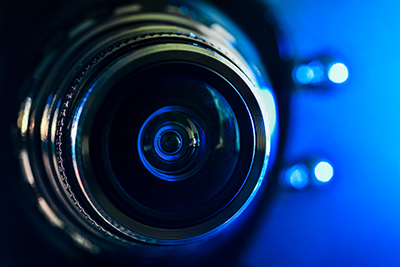
Machine vision cameras have come a long way over the years. At first, engineers had the goal to build cameras that compared to the abilities of the human eye and worked in similar conditions. But as applications for machine vision increased, so did the demand on the cameras. In some ways, cameras have exceeded the capabilities of the eye. But to pull it off, manufacturers need the right lighting for machine vision.
Finding the Right Lighting for Machine Vision
To deliver the precision and speed needed, machine vision cameras require the right lighting. Not only does that mean the correct luminescence and temperature, but also steady, consistent lighting. Depending on the application, different types of lighting can be used. The primary goal is to have the right light-dark contrast in every shot.
1. Direct front light illumination:
This type of lighting partly brightens the surface but can leave it overexposed. And total reflection leaves many surfaces only partly darkened.
2. Diffuse dome light illumination:
This lighting will smoothly illuminate the surface. Not much contrast is provided, but this lighting is useful when light and dark components must be analyzed.
3. Darkfield illumination:
This type makes the lateral edges bright and often highlights scratches, dust particles, and other imperfections on the surface.
4. Backlight illumination:
Backlighting provides only a silhouette for machine vision inspection. No surface information can be gathered, but it works well for measurement applications.
Why the Right Lighting Is Important
Many factors can negatively impact a lighting solution. A light’s age, its temperature, its position, and the stability of its power supply are some direct factors that can affect a machine vision camera’s performance. Some problems not caused by the light include changes in ambient light as well as synchronization between the lighting and the camera.
To deliver reliable, repeatable results, the camera, lighting, and processing systems must work together at peak efficiency. Depending on the application, a light might need to be positioned farther from a part to avoid interference with a process. Improving such lighting doesn’t always mean boosting intensity. Sometimes a wider light is needed over a brighter light. Other times a more focused beam is required.
Build the Best Lighting Solution for Your Vision Application
Don’t make the mistake of pairing the wrong lighting with the right machine vision camera. Most vendors have plenty of advice on the right lighting for your process. Remember that lighting choices are often very specific for your application and your environment. Aside from the factors already discussed, you’ll choose between halogen, xenon, and LED technologies, each with pros and cons.
Can’t seem to make sense of it all? Let the experts at Phase 1 help you decide on the right lighting for your machine vision application.
